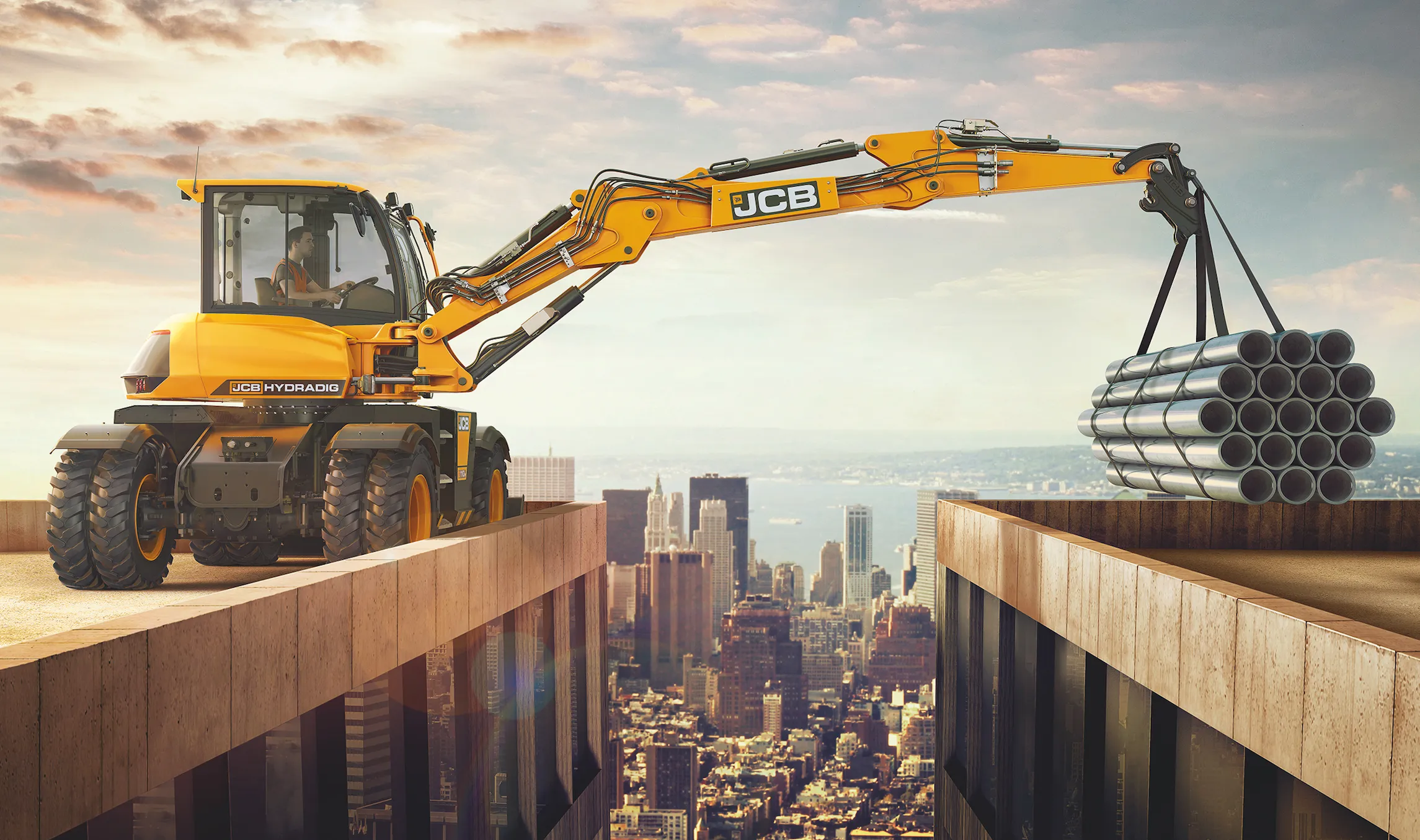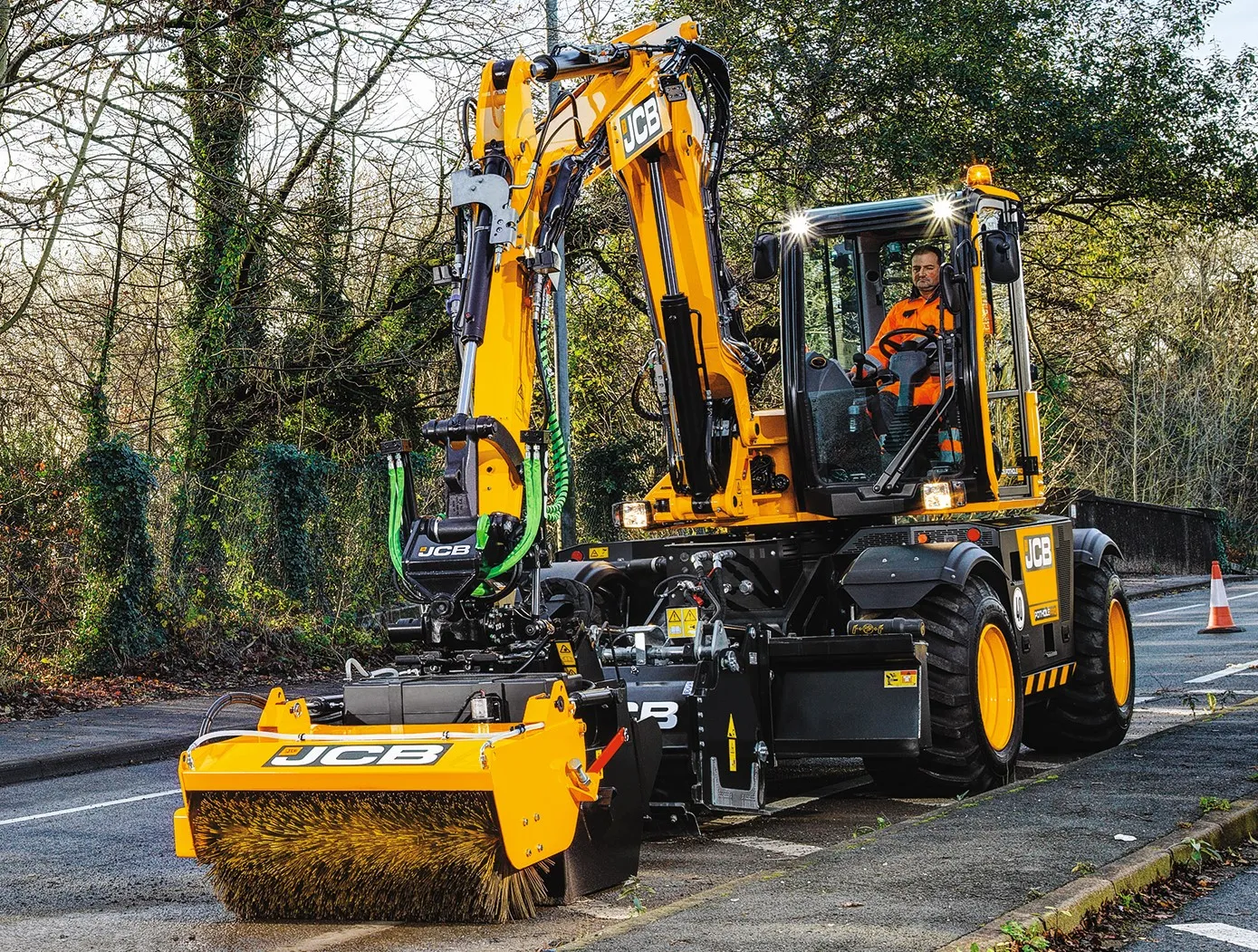
The
It is maximising an array of attachments including a Powertilt tilting hitch, a full range of buckets and a set of pallet forks. It has also been equipped with a Northerntrack hydraulic concrete pulveriser to remove the bridge abutments. It’s been a heavy schedule for
the JCB Hydradig since day one, says David French, a partner in French Contractors, because of its high mobility, all-wheel-steering, hydrostatic drivetrain and maximum road speed of 40kph.
Working in the narrow confines of lane closures, the compact dimensions of the JCB Hydradig come to the fore. Thanks to the TAB boom and a rear overhang of just 120mm it squeezes into tight locations to remove the abutments and parapet walls with ease.
“Being able to provide a solution that exceeds our customer’s requirements has long been a part of the offering here at French Contractors. Our ability to undertake specialist applications has always helped us stand out for our clients,” says French. “The JCB Hydradig does just that - bolstering our fleet and bringing a versatile dimension to operations – whether that be through mobility, excavating, materials handling or proving hugely capable in a demolition application too.”
The stable machine handles the pulveriser exceptionally well, explained Ian Ellery, the machine’s operator. “We would have had to use a larger wheeled excavator if the Hydradig wasn’t available. This would have meant a larger attachment, occupying more of the road and making additional closures necessary.”








